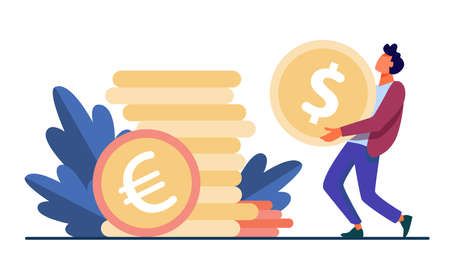Understanding Legal Compliance in E-Commerce
Running an online business in the U.S. is exciting, but it comes with a unique set of legal requirements. Whether you’re just starting out or growing your e-commerce venture, understanding the rules that keep your business compliant is essential for long-term success. Let’s break down the core areas every e-commerce owner should know about.
Federal and State Regulations
The United States has different laws at both the federal and state level that apply to online businesses. These laws are designed to protect consumers, ensure fair business practices, and regulate how you collect and use customer data. Here’s a quick overview of what you need to pay attention to:
| Regulation Type | Description | Who Enforces It? |
|---|---|---|
| Consumer Protection Laws | Require honest advertising, secure payment processing, clear return policies, and customer privacy protection. | Federal Trade Commission (FTC), State Attorneys General |
| Tax Obligations | Sales tax collection varies by state; income taxes must be reported federally and often at the state level. | Internal Revenue Service (IRS), State Tax Agencies |
| Data Privacy Laws | Laws like CCPA (California) regulate how you handle personal information of customers. | State Governments, FTC |
Consumer Protection: What You Need to Know
The Federal Trade Commission (FTC) enforces rules that require you to treat customers fairly. This means you should:
- Avoid making false claims about your products.
- Clearly display shipping costs, delivery times, and return policies.
- Keep customer data secure and only use it as outlined in your privacy policy.
Sales Tax Basics for Online Sellers
If you sell goods online in the U.S., you may need to collect sales tax depending on where your buyers live. Each state has its own rules about when you must collect sales tax—this is called having “nexus.” Here’s an easy way to look at it:
| If Your Business… | You May Need To… |
|---|---|
| Sells to customers in multiple states | Register for sales tax permits in those states and collect applicable sales taxes. |
| Has a physical presence (office, warehouse) in a state | Collect sales tax for customers in that state. |
Key Takeaways for E-Commerce Owners
- Always check both federal and local regulations before launching new products or campaigns.
- Create transparent policies for returns, shipping, and privacy—and make them easy for customers to find.
- If unsure about compliance, consulting with an attorney who specializes in e-commerce law can save you headaches down the road.
2. Intellectual Property Basics for Online Sellers
If you’re running an e-commerce business in the U.S., understanding intellectual property (IP) is a must. IP helps protect your products, brand, and ideas from being copied or misused by others. Here’s a quick breakdown of the three main types of IP that matter most for online sellers: trademarks, copyrights, and patents.
What Are Trademarks?
Trademarks are words, phrases, logos, or symbols that identify your business or products. Think about Nike’s swoosh or Apple’s bitten apple logo—these instantly tell people who made the product. Registering a trademark in the U.S. gives you the exclusive right to use that name or logo in connection with your products, helping build trust with customers and keep competitors from using something confusingly similar.
Trademark Examples:
| Type | Example | Why It Matters |
|---|---|---|
| Word Mark | Amazon | Protects the brand name itself |
| Logo Mark | Nike Swoosh | Makes products easily recognizable |
| Slogan | “Just Do It” | Connects a phrase to your brand identity |
Understanding Copyrights
Copyright protects original works like photos, videos, website content, product descriptions, and even product packaging designs. The moment you create something unique and put it into a tangible form (like uploading a product photo), it’s automatically protected by copyright law in the U.S. This means others can’t legally copy or use your content without permission.
Common E-Commerce Content Protected by Copyright:
- Product photos and videos you shoot yourself
- Your written product descriptions and blog posts
- Custom graphics or artwork on your site
- Your unique packaging design or instruction manuals
The Role of Patents
If you invent a new product or design a unique way of doing something, a patent can give you exclusive rights to make, use, and sell that invention in the U.S. There are two common types for e-commerce:
- Utility Patents: Protect how a product works or is used (for example, a new type of phone charger)
- Design Patents: Protect how a product looks (think of the shape of a designer water bottle)
Pursuing patents can be more complex and expensive than trademarks or copyrights, but they offer powerful protection if you’re developing truly unique products.
Quick Reference Table: Types of IP for Online Sellers
| IP Type | Covers | How Long It Lasts (U.S.) | Main Benefit for E-Commerce Sellers |
|---|---|---|---|
| Trademark | Name, logo, slogan, branding elements | As long as renewed (can last forever) | Keeps your brand unique and recognizable; stops others from imitating you |
| Copyright | Original images, text, videos, website content, packaging design | The creator’s life + 70 years (individual); 95-120 years (business) | Protects your creative work from being copied online or offline |
| Patent (Utility/Design) | New inventions (utility); unique product appearance (design) | Utility: 20 years; Design: 15 years from filing date | Gives you exclusive rights to sell/use your invention or design in the U.S. |
Knowing these basics helps ensure your products and brand stay protected when selling online—and lets you spot potential legal issues before they become big problems.

3. Risks of Sourcing Products: Counterfeits and Infringement
When sourcing products for your e-commerce business, especially from overseas suppliers or unfamiliar vendors, it’s easy to overlook some major legal risks. Two of the biggest pitfalls are selling counterfeit goods and unintentionally infringing on someone else’s intellectual property (IP). Let’s break down what these risks mean and how they can affect your business.
What Are Counterfeits and IP Infringement?
Counterfeit products are fake items that are made to look like real branded goods but aren’t authorized by the brand owner. IP infringement happens when you use or sell products that violate patents, trademarks, copyrights, or other legal protections owned by others. Both can get you into serious trouble in the U.S.
Common Pitfalls When Sourcing Goods
| Pitfall | What It Means | Example | Potential Consequences |
|---|---|---|---|
| Selling Knockoffs | Selling fake versions of branded products | Selling sneakers with a fake Nike logo | Lawsuits, account suspension, hefty fines |
| Copying Designs | Selling products with protected designs or artwork | T-shirts with copyrighted cartoon characters without permission | Legal action, inventory seizure, damaged reputation |
| Patent Infringement | Selling products that use patented technology without a license | Electronics using patented features without approval | Court orders to stop sales, financial penalties |
| Trademark Violation | Using logos, names, or branding owned by another company | Using “Apple” branding on phone cases not made by Apple Inc. | Lawsuits, product removal from marketplaces |
| Sourcing from Unverified Suppliers | Not checking if your supplier is legit or authorized to produce certain goods | Buying handbags from an unknown vendor abroad claiming “designer quality” at low prices | Receiving counterfeits, liability for selling illegal goods in the U.S. |
The Legal Consequences in the U.S.
The American legal system takes intellectual property violations very seriously. If you’re caught selling counterfeits or infringing on IP rights—even if it was accidental—you could face:
- Civil lawsuits: Brand owners can sue you for damages and lost profits.
- Seizure of goods: Customs and Border Protection may seize shipments suspected of containing counterfeit products.
- Marketplace bans: Platforms like Amazon, eBay, and Shopify can suspend or permanently ban your store.
- Heavy fines: Courts can order you to pay significant monetary penalties.
- Criminal charges: In severe cases, criminal prosecution is possible.
Avoiding These Risks Starts With Awareness
The best way to protect your e-commerce business is to know what to watch out for when sourcing goods. Always verify your suppliers, request proof of authenticity or licensing, and avoid deals that seem too good to be true. Taking these simple steps helps keep your business compliant and protects you from costly mistakes.
4. Building Strong Vendor Agreements
Why Solid Vendor Agreements Matter
When you’re sourcing products for your e-commerce business, having a strong agreement with your suppliers is essential. These contracts don’t just protect you legally—they also make sure you get the quality and authenticity your brand promises to customers. Plus, they play a big role in protecting your intellectual property (IP) rights.
Key Elements to Include in Your Vendor Agreements
A well-crafted vendor agreement should cover several important points. Here’s a quick overview:
| Key Element | What It Covers | Why It Matters |
|---|---|---|
| Product Authenticity | Supplier guarantees all products are genuine and not counterfeit. | Protects your brand’s reputation and avoids legal issues with fake goods. |
| Quality Standards | Specific requirements for product quality, testing, and inspections. | Ensures consistency and prevents customer complaints or returns. |
| Intellectual Property Ownership | Defines who owns trademarks, copyrights, and patents related to the product or packaging. | Keeps your brand assets safe from misuse or theft. |
| Compliance with Laws | Supplier agrees to follow all relevant U.S. regulations (like safety, labeling, import/export laws). | Avoids fines, lawsuits, or customs issues. |
| Dispute Resolution | How conflicts will be handled (mediation, arbitration, which country’s law applies). | Makes it easier to solve problems if something goes wrong. |
Best Practices for Drafting Vendor Contracts
- Be Specific: Spell out exactly what you expect—don’t leave things open to interpretation.
- Include Regular Audits: Reserve the right to check product quality and supplier practices at any time.
- Add Penalties: Set clear consequences if the supplier fails to meet standards or violates the agreement.
- Use NDAs: Non-disclosure agreements can help keep your proprietary information private.
- Consult a Legal Expert: Work with an attorney familiar with U.S. e-commerce and IP law to review your contracts.
Your Checklist for a Strong Agreement
- Description of products and quality specs
- Certain delivery times and penalties for delays
- Clear terms about who owns designs, logos, and other IP rights
- Audit rights for product checks
- Laws and regulations that must be followed (such as CPSC or FDA rules)
- A section on dispute resolution and jurisdiction (which court/law applies)
- NDA and confidentiality clauses as needed
The Bottom Line: Protect Before You Source!
Taking the time to build detailed vendor agreements is one of the best ways to safeguard your e-commerce business from product issues, legal troubles, and intellectual property disputes while sourcing products internationally or domestically.
5. Protecting Your Business: Enforcement and Best Practices
Stay Alert: Monitoring for Intellectual Property Violations
Keeping your e-commerce business safe starts with regular monitoring for potential intellectual property (IP) violations. Whether you’re selling your own products or sourcing from suppliers, it’s important to make sure that none of the items in your store are infringing on trademarks, copyrights, or patents. Use online tools and platforms like Google Alerts or Amazon Brand Registry to track unauthorized use of your brand or product images.
Common Signs of IP Violations
| Sign | Description |
|---|---|
| Duplicate Listings | Other sellers copying your product listings, images, or descriptions. |
| Counterfeit Products | Imitations of your products being sold under your brand name. |
| Trademark Misuse | Your logo or brand name used without permission. |
Responding to Cease and Desist Letters
If you receive a cease and desist letter claiming an IP violation, don’t panic. These letters are common in e-commerce and are often the first step taken by brands to enforce their rights. Here’s what you should do:
- Review the Letter Carefully: Identify exactly what is being claimed—whether it’s a trademark, copyright, or patent issue.
- Gather Evidence: Check your product sourcing records and communications with suppliers to confirm the origin of the goods.
- Consult a Legal Professional: An experienced attorney can help you understand the claim and advise on next steps.
- Respond Promptly: Ignoring the letter can escalate the issue. Reply respectfully and outline your findings or corrective actions.
- Remove Infringing Products: If necessary, take down any listings that may be violating IP rights while you investigate further.
Leveraging Legal Resources for Protection
You don’t have to face legal challenges alone. Many resources can help you protect your business and respond effectively to potential threats.
| Resource | Description | When to Use It |
|---|---|---|
| E-Commerce Platform Support (e.g., Amazon Brand Registry) | Tools for reporting IP infringement and managing brand protection directly within major marketplaces. | If you spot counterfeit products or unauthorized listings using your intellectual property. |
| Intellectual Property Attorney | A legal professional specializing in IP law who can review contracts, respond to legal threats, and guide enforcement actions. | If you receive a cease and desist letter or need to enforce your rights against infringers. |
| U.S. Patent and Trademark Office (USPTO) | The federal agency responsible for registering trademarks and patents in the U.S. | If you want to register your brand, logo, or invention for added protection. |
| Online IP Protection Services (e.g., Red Points, MarkMonitor) | SaaS platforms that monitor online channels for infringements and automate takedown processes. | If you need ongoing monitoring across multiple marketplaces or websites. |
Best Practices for Ongoing Compliance and Protection
- Keep Records: Maintain clear documentation of supplier agreements, product origins, and communication regarding IP matters.
- Educate Your Team: Make sure everyone involved in sourcing and listing products understands basic IP rules.
- Register Your IP: Consider registering trademarks, copyrights, or patents where applicable to strengthen your legal position.
- Create Clear Policies: Establish internal guidelines for handling suspected IP violations and responding to legal notices promptly.
- Avoid High-Risk Suppliers: Choose reputable partners with a track record of compliance to minimize risk of sourcing infringing products.


